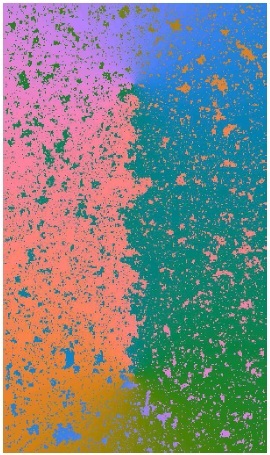100 (102!) Years of the Ising Model
→
Europe/Paris
Marilyn and James Simons Conference Center (IHES)
Marilyn and James Simons Conference Center
IHES
35 route de Chartres, F-91440 Bures-sur-Yvette, France
Description

The Ising model is one of the most classical models of statistical physics and has been a testing ground for mathematicians and physicists for a century. On the occasion of its 100th anniversary, postponed from 2020 to 2022, the Institut des Hautes Études Scientifiques (IHES) organises a special conference that will take place 30 May to 3 June 2022, with talks from various fields involved in the study of the model.
This event should serve as a platform between mathematicians and physicists working in the domain.
This conference is organised by: Hugo Duminil-Copin (IHES), Slava Rychkov (IHES) and Béatrice de Tilière (Cérémade, Univ. Paris-Dauphine)
© Clément Hongler (EPFL)
List of speakers and round-table participants:
- Michael AIZENMAN, Princeton University (Speaker)
- Roland BAUERSCHMIDT, University of Cambridge (Speaker)
- Edouard BRÉZIN, ENS Paris (Round-table)
- Michele CASELLE, Università di Torino (Speaker)
- Loren COQUILLE, Université Grenoble-Alpes (Speaker)
- Victor DOTSENKO, LPTMC Jussieu (Speaker)
- Daniel FISHER, Stanford University (Speaker)
- Jürg FRÖHLICH, ETH Zürich (Round-table)
- Alessandro GIULIANI, Università di Roma 3 (Speaker)
- Rafael GREENBLATT, Universita' degli Studi Roma Tre (Speaker)
- Geoffrey GRIMMETT, University of Cambridge (Round-table)
- Clément HONGLER, EPFL (Speaker)
- Arthur JAFFE, Harvard University (Round-table)
- Rick KENYON, Yale University (Speaker)
- Joel LEBOWITZ, Rutgers University (Round-table)
- Eyal LUBETZKY, Courant Institute, NYU (Speaker)
- Giuseppe MUSSARDO, SISSA Trieste (Speaker)
- Eveliina PELTOLA, HCM University of Bonn (Speaker)
- Ara SEDRAKYAN, Yerevan Physics Institute (Speaker)
- Stanislav SMIRNOV, University of Geneva (Speaker)
- Tom SPENCER, IAS (Round-table)
- Vincent TASSION, ETH Zürich (Speaker)
- Fabio TONINELLI, Technical University of Vienna (Speaker)
- Yvan VELENIK, Université de Genève (Speaker)
- Alessandro VICHI, Università di Pisa (Speaker)
- Wendelin WERNER, ETH Zürich (Speaker)
- Jean ZINN-JUSTIN, CEA Saclay (Speaker)
Contact: Elisabeth Jasserand
Inscription
Zoom registration form
